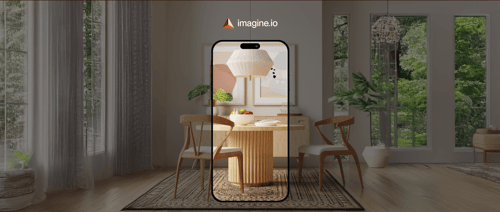The sleep product industry is a battleground of innovation, where brands race to deliver mattresses, bedding, and sleep tech that promise better rest. But launching a new product can feel like navigating a maze of costly photoshoots, physical prototypes, and endless revisions. What if you could cut that timeline from months to days, delivering visuals so lifelike that even experts can't tell they're digital? That's the promise of real-time 3D rendering, a technology transforming how sleep brands bring products to market with speed, precision, and flair.
The Stakes Are High in Sleep Innovation
The global sleep market is surging, driven by consumer's growing obsession with better rest. A report from Research Nester values the sleep tech devices market at USD 28.1 billion in 2025, up from USD 24.68 billion in 2024. It's projected to skyrocket to USD 196.44 billion by 2037, with a compound annual growth rate of 17.3%. North America, a powerhouse in this space, is expected to contribute USD 64.83 billion by 2037, fueled by frequent product launches and a rising incidence of sleep disorders. In the U.S., 15% of adults use sleep-tracking apps like Sleep Cycle, while in China and India, about 25% of survey respondents reported using similar tools in the past year. This demand for innovation puts immense pressure on brands to launch quickly without compromising quality.
Enter real-time 3D rendering. Unlike traditional photography, which requires elaborate setups and weeks of coordination, rendering produces photorealistic visuals in minutes. Platforms like imagine.io enable brands to upload 3D models and generate assets images, videos, 360-degree views that match the quality of a live photoshoot. Studies conducted by imagine.io reveal that even seasoned eCommerce professionals struggle to distinguish their rendered assets from real photographs, proving that quality doesn't have to take a backseat to speed.
Trends Reshaping the Sleep Product Landscape
Today's consumers don't just shop they explore. They want to rotate a mattress in 360 degrees, zoom in on stitching details, or visualize bedding in their own bedroom through augmented reality. Real-time rendering makes this possible, delivering immersive online experiences that are fast becoming essential for eCommerce success. Brands can showcase products with unparalleled detail, boosting engagement and building trust with shoppers.
Customization is another game-changer. Whether it's selecting mattress firmness, pillow size, or bedding fabric, consumers crave personalization. Real-time rendering powers interactive configurators, letting customers experiment with options in real time without the need for physical prototypes. This not only accelerates the design process but also supports sustainability by cutting down on material waste. Meanwhile, AI-driven tools automate scene creation and lighting, streamlining the production of marketing assets. From product pages to social media campaigns on platforms like Instagram and LinkedIn, these visuals help brands like SertaSimmons and King Koil stand out.
Sustainability and Scalability
Rendering also aligns with the industry's push for eco-friendly practices. By creating digital twins of products, brands reduce the need for physical samples, minimizing waste. For companies managing complex catalogs think thousands of SKUs across regions like New York, Los Angeles, or Canada rendering platforms offer unmatched scalability. imagine.io's subscription model, for instance, provides unlimited image generation, allowing brands to produce high-quality visuals for entire product lines without breaking the bank.
Real-World Success Stories
The impact of real-time rendering is best seen in action. Take a mattress brand launching a new line with multiple SKUs. Traditionally, creating marketing assets could take eight weeks, factoring in studio bookings, photography, and editing. With real-time rendering, one imagine.io client slashed that timeline to two weeks, uploading 3D models to a cloud-based platform and generating visuals for their entire catalog in record time. The result? A faster launch and significant cost savings.
Bedding retailers are also capitalizing on this technology. A global brand used centralized 3D asset libraries to adapt campaigns for markets like Dallas, Chicago, and Las Vegas, ensuring consistency while reducing localization costs. Another sleep tech innovator boosted online engagement by integrating AR-enabled renderings, allowing customers to “place” mattresses in their homes before purchasing. These wins highlight how rendering drives efficiency and elevates customer experiences.
Breaking Down Barriers
For brands with high-volume catalogs, the speed and scale of platforms like imagine.io are a revelation. Unlike competitors who focus on one type of visual output say, static images or videos imagine.io offers an all-in-one solution, covering images, videos, 360-degree views, and configurators. This versatility eliminates the need to juggle multiple vendors, streamlining workflows for companies like Kohler or Hunter Fan.
Overcoming Hurdles
No technology is without challenges. Managing 3D assets material files, textures, and specifications demands precision to ensure visuals align with physical products. Large catalogs require robust hardware, which can strain smaller brands. Training teams to use rendering platforms effectively takes investment, and there's a risk of over-reliance. Without strict quality assurance, digital assets might look flawless but fail to capture a product's real-world feel, potentially leading to customer dissatisfaction.
Cost is another concern. Some prospects balk at ongoing subscriptions, preferring one-off project pricing. Yet, platforms like imagine.io counter this with custom pricing tailored to each client's needs, offering flexibility that traditional agencies often lack. While not part of a vetted agency pool, cloud-based solutions provide scalability and innovation that outweigh the familiarity of conventional vendors.
Unlocking Opportunities
The advantages of real-time rendering are transformative. By eliminating physical prototypes and photoshoots, brands can slash costs and accelerate time-to-market. A single 3D model can be repurposed across regions, ensuring consistency for companies targeting key markets like Austin, High Point, or Canada. High-quality visuals also reduce eCommerce return rates by aligning online expectations with reality, a critical factor for brands like Ruggable or KegWorks.
Social media amplifies these benefits. Platforms like Facebook, YouTube, and LinkedIn turn rendered visuals into shareable content, driving engagement and brand loyalty. For sleep product companies, this means turning static listings into dynamic experiences that resonate with consumers.
A Future Rendered in Real Time
The sleep product industry is at a crossroads. As consumer demand for innovation, personalization, and sustainability grows, brands can't afford to be slowed by outdated processes. Real-time 3D rendering, powered by platforms like imagine.io, is redefining what's possible. It's not just about speed it's about delivering quality, consistency, and engagement in a fiercely competitive market. Looking ahead, cloud-powered collaboration and AI-driven automation will push the boundaries further, enabling designers, marketers, and manufacturers to work seamlessly on the same 3D assets. For sleep brands aiming to lead, embracing real-time rendering isn't just a smart move it's the key to staying ahead in a world where every moment counts.
Frequently Asked Questions
How does real-time 3D rendering reduce product launch timelines for sleep brands?
Real-time 3D rendering can slash product launch timelines from months to just days by eliminating the need for costly photoshoots and physical prototypes. Sleep brands can upload 3D models to platforms like imagine.io and generate photorealistic images, videos, and 360-degree views in minutes rather than waiting weeks for traditional photography setups. One client reduced their timeline from eight weeks to just two weeks while creating marketing assets for their entire catalog.
What are the cost benefits of using 3D rendering for mattress and bedding marketing?
3D rendering significantly reduces costs by eliminating expensive studio bookings, photography equipment, and physical sample production. Brands can create unlimited high-quality visuals from a single 3D model, repurposing assets across different regions and marketing channels without additional photography costs. The technology also supports sustainability by reducing material waste from physical prototypes, while subscription-based platforms offer scalable pricing that's more cost-effective than traditional agency work.
Can real-time rendering improve customer experience for online mattress and sleep product shopping?
Yes, real-time rendering creates immersive online shopping experiences that boost customer engagement and reduce return rates. Customers can interact with 360-degree product views, zoom into detailed stitching, and even use AR features to visualize mattresses in their own bedrooms before purchasing. Interactive configurators powered by rendering technology allow shoppers to customize firmness, size, and fabric options in real-time, helping align online expectations with the actual product and building greater purchase confidence.
Disclaimer: The above helpful resources content contains personal opinions and experiences. The information provided is for general knowledge and does not constitute professional advice.
You may also be interested in: Imagine.io | Award Winning 3D + AI Product Visualization
Struggling with expensive, outdated product visuals that slow down your creative process and stunt eCommerce growth? imagine.io's AI-powered platform empowers furniture, home décor, and textile brands to effortlessly produce striking 3D images, immersive videos, AR experiences, and interactive configurators. Cut production costs up to 70%, boost conversions 5X, speed up prototyping, and supercharge your online sales. Ready to elevate your product visuals and captivate customers? Book a demo with imagine.io today!
Powered by flareAI.co




.png?width=500&name=How%20to%20Add%20a%203D%20Product%20Configurator%20to%20Your%20WordPress%20Website%20(Complete%20B2B%20Guide).png)
















%20(1).png?width=500&name=Why%20Exploded%20Mattress%20Views%20Matter%20(And%20How%20to%20Generate%20Them)%20(1).png)
.png?width=500&name=Best%20Shopify%20Product%20Configurator_%20How%20to%20Choose%20the%20Right%20One%20(2).png)
.png?width=500&name=Why%20Exploded%20Mattress%20Views%20Matter%20(And%20How%20to%20Generate%20Them).png)



.png?width=500&name=Best%20Shopify%20Product%20Configurator_%20How%20to%20Choose%20the%20Right%20One%20(1).png)







.png?width=500&name=How%203D%20Rendering%20Can%20Make%20or%20Break%20Your%20Industrial%20Design%20Pitch%20(1).png)








%20with%20Digital%20Twins%20and%203D%20Visualization.png?width=500&name=Optimizing%20Your%20Digital%20Asset%20Management%20(DAM)%20with%20Digital%20Twins%20and%203D%20Visualization.png)




.png?width=500&name=Styling%20Home%20Decor%20for%202025_%20From%20Global%20Influences%20to%20Playful%20Personalization%20(1).png)
